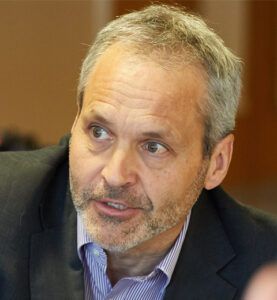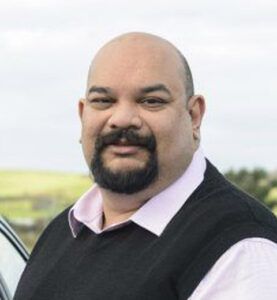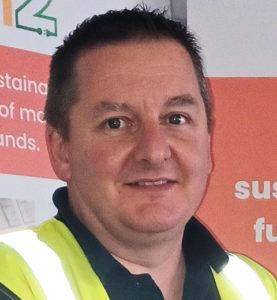Bridging the north-south EV charging divide
As street lighting may be the solution for Scotland’s 32 local authorities looking to provide adequate charge points for electric vehicle owners who have no driveways, one of the UK’s leading providers of new ‘intelligent’ technology for charging EVs is now in discussion with 24 Scottish councils on a major push to help meet their climate change and net zero emission objectives. Toby Butler, UK Managing Director of ubitricity, says he has “big ambitions for Scotland” that will provide EV drivers with state-of-the-art on-street charging. Here in an interview with Norrie Hunter, he outlines his thoughts.
Q. What are the company’s strategic plans for Scotland (and the north of England)?
A. “We have big ambitions for Scotland. Transport Scotland has done a brilliant job on kickstarting their EV charging infrastructure strategy, and we want to dedicate funding and resource to be part of this next phase of growth in Scotland.
“We believe that no one should be left behind in the transition to e-mobility. Those residents who can’t have a home charger or don’t have access to a private parking space or garage should be able to easily access public charging infrastructure close to home.
“Our plans for the next year are to work closely with Scottish local authorities to help develop their EV strategy, from funding through to charge point deployment, and make sure that their residents have access to the best network they possibly could have.”

Q. What are the most exciting developments within ubitricity for the coming 12 months – with particular focus on Scotland? (and the north of England?)
A. “We’ve put a particular focus on Scotland and the north of England for the coming 12 months. For the UK to truly transition to e-mobility, charging infrastructure needs to be easily accessible everywhere and currently there is an imbalance in charging infrastructure between the north and south of the UK.
“The most exciting development for us in Scotland is that we are already in contact with 24 Scottish local authorities and aim to be in contact with all 32 of them by the end of the year. The next step for us is to develop a deeper understanding on what each local authority needs. We want to bring our data and mapping capabilities to the local authorities of Scotland to put together the best tailored EV charging infrastructure approach for their residents.”
Q. What sort of reaction have you had from Scotland’s local authorities so far in relation to what ubitricity can offer in helping them meet their 2030 OZEV targets?
A. “We have had incredible interest from Scotland’s local authorities so far and have created good relationships and connections in all pathfinder territories (e.g., Aberdeen). We also have a great relationship with Transport Scotland and have great respect for what they are doing in the EV landscape.
“For ubitricity, one of the most important things we want to focus on is creating great infrastructure that can be easily rolled out to help bring LAs closer to their 2030 OZEV targets.”

Q. What has been the reaction from those LAs in Southeast England (where the majority of your installations have been so far) to the ubitricity offering?
A. “As the largest public charge point operator in the UK, I think it is fair to say we’ve had a good reaction from southern councils, developing great relationships with LAs in the south.
“We treat EV charging as critical infrastructure and we think that shows in the level of service and reliability we provide. We have very satisfied customers, from both the councils and end users. Additionally, we have learnt much in our rollout of over 5,400 public charge points in the UK and would love to bring that knowledge to Scottish local authorities.”
Q. What’s the difference / benefits of LAs adopting / using the ubitricity model?
A. “Ubitricity’s solution blends effortlessly into the streetscape and means our charge points are very robust as we use the lamp post column to house the chargepoint. Aside from the technology, we are a popular choice with local authorities due to our approach to maintenance. We provide continued maintenance and support across the whole of our network throughout the life of the product, which gives local authorities piece of mind that their residents will be able to access a reliable charging service.”
Q. Are you looking forward to (announcing) your first major breakthrough north of the border or will the process through to implementation with LAs be a lengthy one…. that’s to say from contract signing to local residents being able to use ubitricity installations?
A. “We are looking forward to it and expect to be able to announce our first step in Scotland soon. It will be really exciting to see Scottish EV drivers benefiting from a great on-street public network and Scottish residents benefiting from cleaner air.
“Timelines to installation on the ground are difficult to predict and can be influenced by a host of factors but we can say that ubitricity will provide support to local authorities at every step of the way to ensure the process is as smooth as possible.”
Q. Will ubitricity be involved in converting Shell fuel / service stations to offering electric charge point facilities (or is that handled by a separate division)?
A. “We work closely with Shell to provide a wide portfolio of chargers where necessary. Whilst we ourselves don’t focus on converting service stations, we work closely with Shell Recharge who do.”
Q. Should councils prioritise rapid or slower charging?
A. “We don’t think it is the right thing for councils to decide between installing either slow or rapid charging, you need both options when developing an EV charging strategy. The lead time for a rapid hub can easily be 12-18 months from planning to going live. In parallel, we can easily implement on-street standard lamppost chargers within a month. We aim to show councils that on-street charging can be quick to install and that projects can begin now whilst rapid and EV charging hub projects are developed over a longer time.
“An ubitricity charge point provides a charge speed of 5kW. An average charge for our customers is 20kWh which means, on average, our customers actively charge for four hours. Most of our end users plug in on their street when they get back from work, around 7pm, and usually unplug in the morning before their morning commute. So 5kW charging speed for on-street charging is easily fast enough for drivers’ needs. Our customers do not sit there waiting for the car to charge, they use our charge points as they would a home charger and charge whilst they sleep. We are motivated to open up convenient EV ownership to drivers who do not have off-street charging and cannot install their own private charger.
“Evidence shows the public wants to charge at or near home. When it comes to EV charging, near-home charging has been shown to be the most appealing and the primary charging solution for those looking to switch to EVs, with a common goal to park directly outside the home. We also know the public don’t want to wait for their vehicles to charge. When asked what they considered a barrier to switch to an EV in relation to charging, residents said perceived long wait times for charging were viewed as inconvenient for many, particularly for those who have busy lives such as parents of young children and those who travel as part of their job.”





































































































